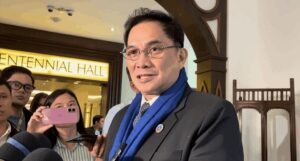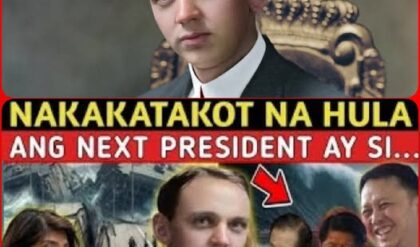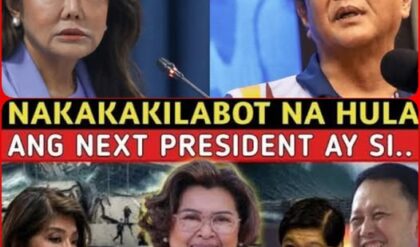MANILA, Philippines – The Department of Justice (DOJ) is gearing up for a significant move in the ongoing investigation into alleged flood control project anomalies, following a direct directive from a Manila Regional Trial Court (RTC) judge. Prosecutor General Richard Fadullon confirmed on Wednesday that the DOJ will initiate immediate action to probe the reportedly falsified sworn statement submitted by key Senate witness, Orly Guteza, as soon as the official court order is in hand.

Judicial Decree Ignites New Legal Scrutiny
The controversy centers on former Marine sergeant Orly Guteza, who previously dropped a bombshell testimony claiming he facilitated the delivery of suitcases brimming with kickbacks from public works projects to several high-profile lawmakers. However, the legal weight of his crucial affidavit has been dramatically undermined.
In a pivotal October 24 order, Executive Judge Carolina Icasiano-Sison of the Manila RTC Branch 18 delivered a finding that the notarization on Guteza’s sworn statement was forged, specifically noting the falsified signature of notary public Petchie Rose Espera. The court’s declaration is not merely a procedural note; it is a decisive legal finding that casts a major shadow over a central piece of evidence in the legislative inquiry.
Speaking at a press briefing, Prosecutor General Fadullon acknowledged the gravity of the development, stating, “We have not seen it [the order]. I heard in the news that the court had declared that the document or the notarization was falsified. But as to what the instructions of the court are specifically for the department to do, we have not received them yet.” This statement underscores the judicial-executive handoff that is currently pending, an administrative hurdle that must be cleared before the full-scale criminal investigation can commence.
The RTC’s order is explicit: it refers the falsification incident to the DOJ for a comprehensive further investigation and the subsequent filing of proper criminal charges against Guteza. Moreover, the judge broadened the scope, indicating that the DOJ’s action may extend to “other persons who actively participated in [the] falsification,” suggesting potential conspiracy charges beyond the witness himself.
The Path to Prosecution: Procedural Requirements

DOJ spokesperson Raphael Niccolo Martinez provided essential clarification on the procedural steps that must be followed once the official referral is received. Martinez emphasized that the DOJ’s prosecution arm does not initiate investigations sua sponte (on its own accord) without a formal complaint or referral.
“Complaints have to be filed first with the prosecution before it can start probing into the matter,” Martinez explained. This means the court’s referral acts as the basis for initiating the preliminary investigation. He continued, outlining the standard prosecutorial standard: “And then afterward, if we find that sufficient proof exists meeting the quantum of evidence under the law, then we file it with the courts.”
This process is critical. The DOJ must meticulously gather and evaluate evidence to meet the standard of probable cause—the legal requirement to formally file charges in court. The focus now shifts from the political drama of the Senate hearing to the rigorous, evidence-based process of criminal justice.
The Dual Nature of Testimony: Falsification vs. Truth
The finding of falsification creates a complex legal dichotomy. While the document itself—the notarized affidavit—has been legally compromised, the underlying substance of Guteza’s claims remains a separate issue.
Prosecutor General Fadullon made a crucial distinction regarding the legal implications of a falsified affidavit. He clarified that the court order declaring the affidavit falsified primarily means the document “cannot be used or deemed binding by another party” in a formal legal setting due to the defective notarization.
However, the veracity of the statement remains unaffected by the forgery of the notary’s signature. “As far as Guteza is concerned, if what he’s saying is ‘this is my statement,’ that doesn’t change whether or not it was notarized,” Fadullon asserted. “Because the truth or veracity of the statement is different from its being binding on him and on third parties.”
In essence, the legal system must now grapple with two parallel tracks:
-
Criminal Falsification: Investigating and prosecuting Guteza and potentially others for forging the notary’s signature, a serious offense under the Revised Penal Code.
Substantive Corruption Claims: Determining the truthfulness of Guteza’s allegations of kickbacks and corruption, which were the original focus of the Senate inquiry.
If Guteza’s sworn statement itself contains lies, he could face charges of perjury. If the contents are true, the government still has a major corruption case on its hands, though it would need to find new, admissible evidence to substantiate the claims, as the compromised affidavit may be inadmissible as a formal document.
The Genesis of the Controversy

The former Marine sergeant first came into the public eye on September 25, when he appeared before the Senate Blue Ribbon Committee hearing, which was investigating massive financial anomalies in flood control infrastructure projects.
During the highly publicized hearing, Guteza was permitted to read his affidavit into the record. His presentation was orchestrated by Senator Rodante Marcoleta, who informed the body that the witness had been referred to him by former congressman Mike Defensor. This political referral further intertwined the legal case with existing political rivalries and public interest debates.
The subsequent discovery of the forged notary public signature has not only thrown Guteza’s own legal standing into jeopardy but has also raised uncomfortable questions about the vetting process for witnesses presented in high-level legislative investigations. For a witness to present a seemingly crucial piece of evidence that is later found to be legally defective is a blow to the credibility of the entire proceeding.
Challenges Ahead for the DOJ
The task now before the Department of Justice is formidable. They must manage the procedural requirement of officially receiving the order, swiftly commence an investigation into the criminal act of falsification, and potentially track down the witness himself.
Earlier reports indicated that even serving a basic legal document to Guteza was proving difficult. DOJ spokesperson Martinez previously noted that the agency needed a verifiable address to even dispatch a subpoena to Guteza. This logistical challenge only compounds the complexity of the forthcoming criminal probe.
In conclusion, the Manila RTC’s order is a dramatic turning point. It shifts the legal focus from the alleged corruption itself to the integrity of the evidence being presented. The DOJ’s commitment to immediate action signals a zero-tolerance approach to the manipulation of legal documents, regardless of the gravity of the underlying claims. This new investigation into falsification will be a crucial test of the justice system’s ability to uphold procedural law while simultaneously pursuing substantial corruption.




